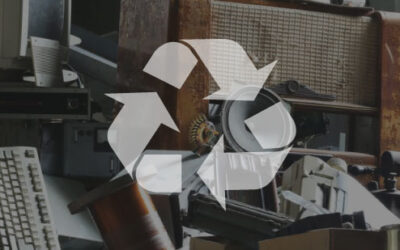What are the benefits of e-waste Recycling?
Introduction:
The electrical and electronic equipment and its parts that are nearing their end-of-life stage, and get discarded or donated by the owner are termed e-waste. Handling e-waste is a rapidly growing concern as it negatively impacts human health and the environment. Recycling e-waste is thus considered a highly valuable process in e-waste management. It has multiple benefits. E-waste consists of toxic chemicals which tend to leach into the environment. Recycling helps to minimize the accumulation of these waste items in landfills and protects the environment. Furthermore, it also helps recover their inherent value and reduces pressure on natural resources. Recycling e-waste is the way to ensure sustainability.
What is the E-waste Recycling Process?
E-waste recycling is a strategically-defined multi-stage process. It involves collecting, disassembling, sorting, and recycling the contents to repurpose their salvageable properties. Often companies tend to outsource e-waste recycling for optimal recovery of materials. The professional team also ensures that the data stored in these electronics are completely destroyed. If you want to understand how to recycle e-waste, go through the following steps:
1. Collection
E-waste is primarily collected from the source and transported to specialized electronics recyclers. Recyclers often place collection bins or take-back booths in specified locations. The ideal practice is to separate the e-waste at this stage.
2. Storage
Safe storage is an essential aspect of this process. Properly sealed and labeled containers must be used to store e-waste to avoid clean-up costs. It should prevent the waste from escaping the container and causing pollution. For instance, the smashing of fluorescent tubes due to improper handling can cause harm.
3. Manual Sorting
Manual sorting involves the removal of items during their processing. Electronics typically consist of various metals, glass, and plastics, among other elements. The equipment is taken apart to sort the components by category. This stage also ensures the removal of hazardous materials.
4. Dismantling & Shredding
The e-waste is dismantled manually to recover or reuse the valuable materials. Shredding ensures proper sorting of materials. The e-waste is shredded into pieces as small as 100mm. This enables effective mechanical separation in further stages.
5. Mechanical Separation
It involves a series of consequent processes. Under magnetic separation, a large magnet is used for segregating ferrous and non-ferrous materials. It is followed by water separation in which hydraulics is used for separating glass and plastic safely.
6. Small and Large Size Reduction Process
Size reduction is critical to the entire process to ensure that the gathered materials are reasonably uniform. Volume reduction also reduces the amount of space covered by these materials for storage, recycling, or subsequent disposal.
7. Recovery
The separated materials are analyzed and refined to improve their quality. Once recovered, it is finally available in the market for sale and reuse. Certain materials, like plastic and steel, enter other recycling streams at this point.
Benefits of Recycling E-waste
As per research studies, by 2030, the world is likely to produce e-waste amounting to 75 million metric tonnes. Recycling e-waste is thus the ultimate way to manage the rapidly growing e-waste problem. It is a key strategy in e-waste management in India to keep these items out of landfills and reduce environmental impact. Here are the major benefits of recycling electronic waste.
Environment Protection & Toxic Waste Prevention
E-waste consists of a high level of contaminants including arsenic, mercury, cadmium, and lead. When disposed of carelessly, these contaminants leak into the environment harming the environment and human health. Recycling minimizes this risk by preventing the accumulation of toxic waste in landfills.
Saving Natural Resources, Land, and Energy
Recycling e-waste conserves natural resources by reducing the pressure to extract raw materials for electronics production. It saves space in landfills. Moreover, electronics made from recycled materials consume less water, and energy, and reduce pollution.
Recovery of Materials
Recycling helps to recover valuable materials from obsolete or discarded electronics. These metals and other valuable substances once again enter the market for reuse. It also helps recover scarce metals that are hard to source.
Appropriate Data Removal and Security
Data security is vital in present times. Deleting the files does not guarantee their permanent removal. It needs specialized software and strategy. During e-waste recycling, ensuring appropriate data removal and security as per the standard protocols is a must.
Reduction in Global Warming
E-waste recycling brings down methane emissions. The reduction in carbon emissions in turn helps to ameliorate global warming to a great degree. Improper e-waste management on the other hand leads to aggravated global climate change.
Support for Economic Growth
Envisioning a ‘circular economy’ with a fully-functional e-waste recycling system results in a better return on investment in electronics. Recycling is an economically viable alternative and also produces job opportunities. It also reduces the associated costs of maintaining waste sites.
Enable Sustainable Production of New Electronics
Recycling e-waste helps to fuel a sustainable future. New electronics can be produced in an environmentally-sound manner with recycled materials. It consumes lesser energy, prevents pollution, and emphasizes on productive use of materials throughout its lifecycle.




